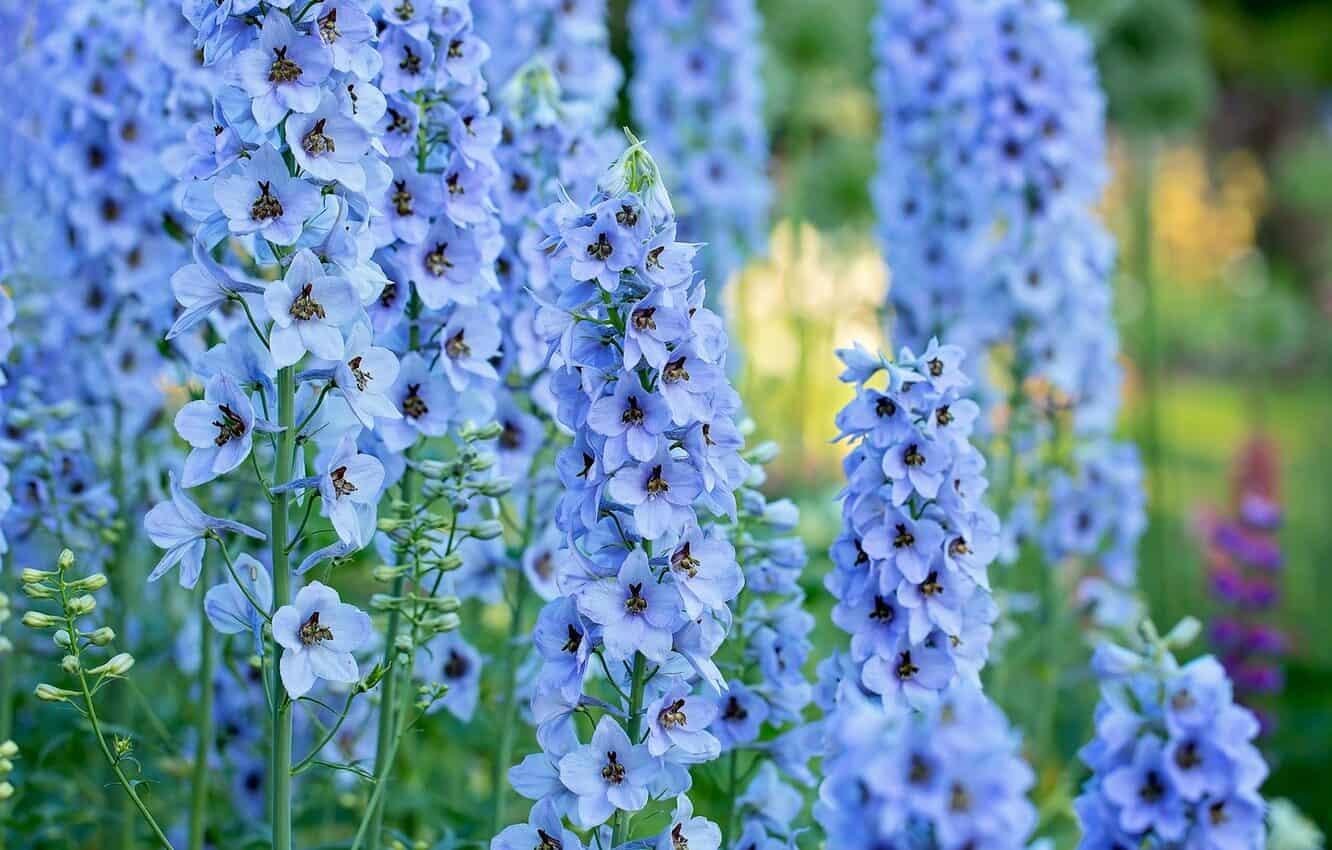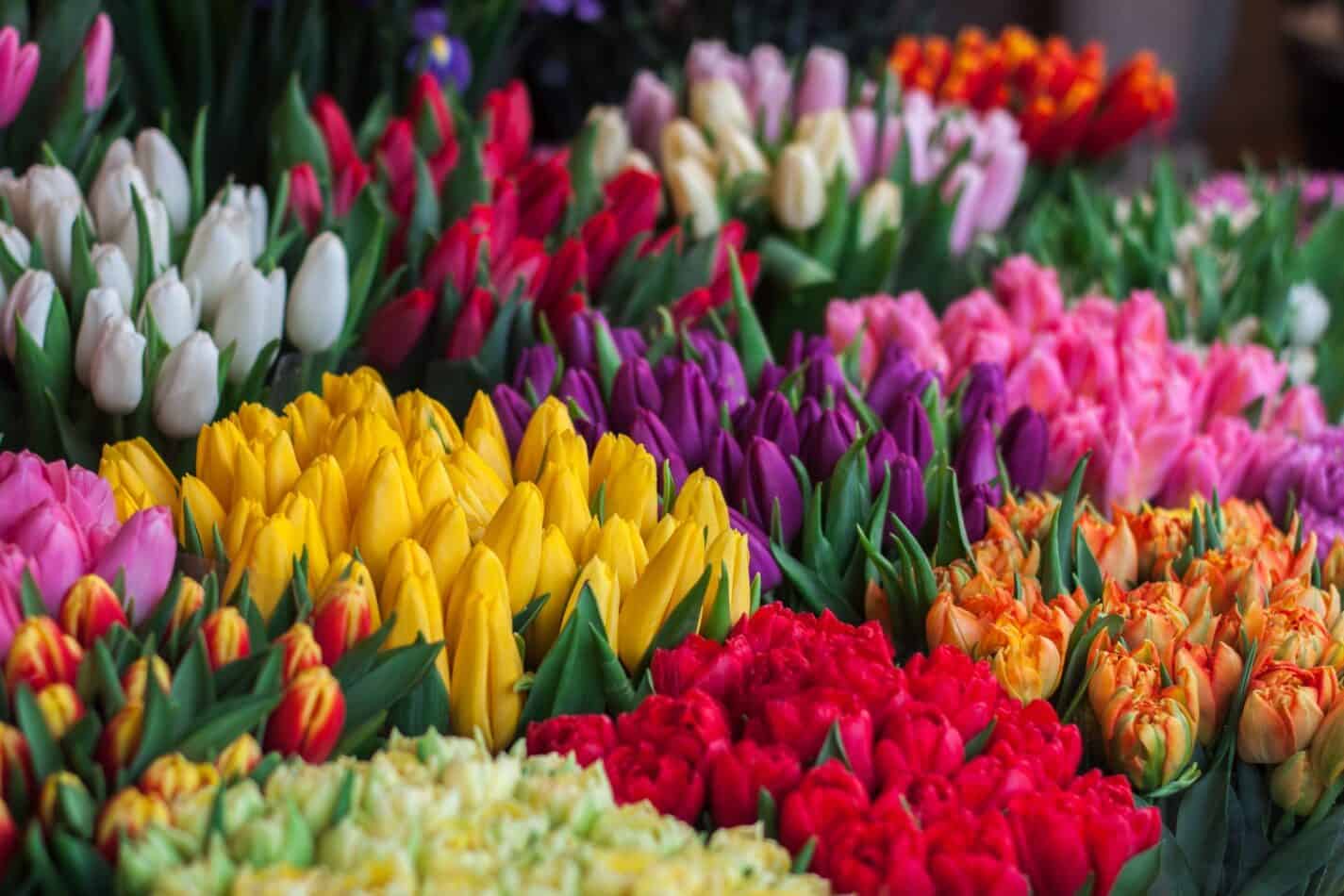Everlasting Flower is the magnificent flower of summer. A short-lived tender perennial or annual, Helichrysum bracteatum produces daisy-like blooms that feel like stiff paper and feature a central yellow disc surrounded by hues of yellow, orange, pink, red, or white. And thanks to their capability to retain their shape and color even when dried, they have been blessed with the name “Everlasting Flower”.
Etymology
The genus Helichrysum derives its name from the Greek words “helios” meaning sun and “chrysos” meaning gold, although some also say that it comes from the Latin phrase “helium-chrysos” which means a “golden sun.” Bracteatum is a botanical term derived from the Latin word bractea, translated as a “thin metal or paper plate,” referencing the petals. This flower is also commonly known as Wild Balsam, alchemilla, and St. Anthony’s Weed.
How to Plant and Grow
Everlasting Flower flourishes best when growing in full sun and introduced to soils rich in organic matter with moderate to tight water availability. Pruning can be done in late winter and spring to keep the plants from getting leggy and sparse, allowing for more moderate growth. Plant them in a wide range of temperatures, from 50-90°F and in an area with enough air ventilation to avoid the growth of mildews and molds. Soil pH should be maintained between 6.0-6.5 to ensure optimal plant growth. When planting, remember to keep 8-12 inches between individual plants.
Meaning and Symbolism
Everlasting Flower is a blossoming reminder that life is to be honored and enjoyed. It is symbolic of love and adoration and helps us to remember the joys life offers. It can also be seen as a symbol of resilience, as its petals are known to stay firm and continue through any kind of environmental changes. This can also be seen in its ability to tolerate drought and heat. The Everlasting Flower is a reminder to not let our lives become heavily burdened with stress and sadness, but to enjoy and cherish the moments of beauty and joy along the way.
History, Mythology, and Religious Significance
Everlasting Flower has been a beloved flower for many centuries, first seen popular in ancient Greek and Roman times. The flower began to have a religious significance when worn by Christians during Easter to symbolize their faith in the resurrection. Despite its scientific names, it has been known by many other common names historically, such as Wild Balsam, St. Anthony’s Weed, and Alchemilla. Many Christian burial grounds are also known to have used Everlasting Flower as it is seen as a symbol of life, remembrance, and hope everlasting.
Flower Varieties and their Defining Characteristics
The various varieties of Everlasting Flower include both perennial and annual species. Most varieties are native to societies found in Europe, the Middle East, and Africa. All varieties share the common trait of producing daisy-like blooms with paper-like petals in different shades of yellow, orange, pink, red, or white. The most popular types of Helichrysum bracteatum are:
- Helichrysum Petiolare – This variety has intense golden flowers that are slightly bigger than other varieties. Its petals are also known to be tougher and less prone to breaking.
- Helichrysum Italicum – Also known as Curry Plant and Italian Everlasting, this variety has long and thin stems with a more pungent and spicy fragrance. The flowers are also a deeper yellow hue than other varieties.
- Helichrysum Gymnocephalum – This variety has silvery-green leaves and smaller relatively more delicate and delicate flowers. The flowers also have a mild astringent scent.
How to Pot and Repot
Potting and Repotting Helichrysum bracteatum is fairly simple and easy to do, requiring only basic knowledge of basic gardening techniques. When potting for the first time, it is important to select a pot that is 1-2 inches wider than the plant roots. It is vital to use well-draining soil that contains plenty of organic matter, such as compost, aged manure, or peat moss. During repotting, try to avoid damage to the roots, being gentle and taking all the old soil off the roots.
How to Prune
Pruning is an important factor for growing Helichrysum bracteatum, as it encourages healthy and attractive growth. Pruning should be done in late winter or early spring just before the growing season begins. To properly prune the flowers, begin by cutting back the flower heads by 1-2 inches. Prune back the oldest and woodiest stems but do not over prune, as the Everlasting Flower, is a short-lived tender plant. After pruning, it is best to nourish and mulch the soil.
How to Propagate
Propagation of the Everlasting Flower is best done through cuttings, as they have a better chance of surviving into adulthood compared to propagation from seed. To propagate from cuttings, select healthy stems that are 8-10 inches long and remove them from the parent plant. Place them in a pot filled with moist soilless medium such as peat-vermiculite mix and set them in a bright but shaded area. After 6-10 weeks, the cuttings should be well-rooted, transplant them into a pot containing well-draining soil.
Common Pests and Diseases
Everlasting Flower is relatively tolerant to pests and diseases when kept in healthy growing conditions. Common pests include aphids, white flies, slugs, and mealybugs, while common diseases include powdery mildew and root rot. In order to prevent these issues, it is important to provide adequate air ventilation around your plants and to ensure that the soil is regularly monitored for organic matter and fertilizer levels.
Three Frequently Asked Questions About Helichrysum bracteatum
- How often should I water my Everlasting Flower?Your Everlasting Flower should be watered when the top of the soil feels dry to the touch. It is important to remember that this flower is relatively tolerant to drought, so watering it more frequently than necessary can lead to root rot.
- What is the best way to care for my Everlasting Flower?Caring for your Everlasting Flower includes providing it with full sun, as well as well-draining soil and an adequate amount of air ventilation. It is also important to fertilize the soil regularly and to prune the flower in late winter or early spring.
- What zone is the Everlasting Flower used in?The Everlasting Flower is suitable for Zones 4-9 and can tolerate temperatures between 50-90°F. It is important to remember that this flower is only a tender annual, so you will have to replant it every year.
Fact Sheet
| Flower | Everlasting Flower |
| Botanical Name | Helichrysum bracteatum |
| Family | Asteraceae, Daisy Family |
| Plant Type | Perennial |
| Mature Size | 1-2 feet tall, 1-3 feet wide |
| Sun Exposure | Full Sun |
| Soil Type | Well draining, sandy or loam soils |
| Soil pH | Ideally 6.0-6.5 |
| Bloom Time | Summer to Fall |
| Flower Color | Yellow, orange, pink, red, white |
| Hardiness Zones | 4-9 |
| Native Area | Europe, Middle East, and Africa |
What we love from Amazon this week
Buy these wonderful flowers directly from Amazon:















